In the second half of 2022, 9 new properties were listed in the National Register from Pennsylvania! They include an interesting range of institutional, ecclesiastical, commercial, educational, and industrial properties across 9 counties.
The Peoples Bank Building
301 5th Ave., McKeesport City, Allegheny County
LISTED, 7/5/2022
PA-SHARE Resource #1999RE00607
Under Criterion A, The Peoples Bank Building is locally significant as the decades-long headquarters of two important McKeesport business enterprises: the Peoples Bank of McKeesport, and as the flagship store of Ruben’s Furniture, which was a major regional furniture dealer in Western Pennsylvania and Ohio for six decades.
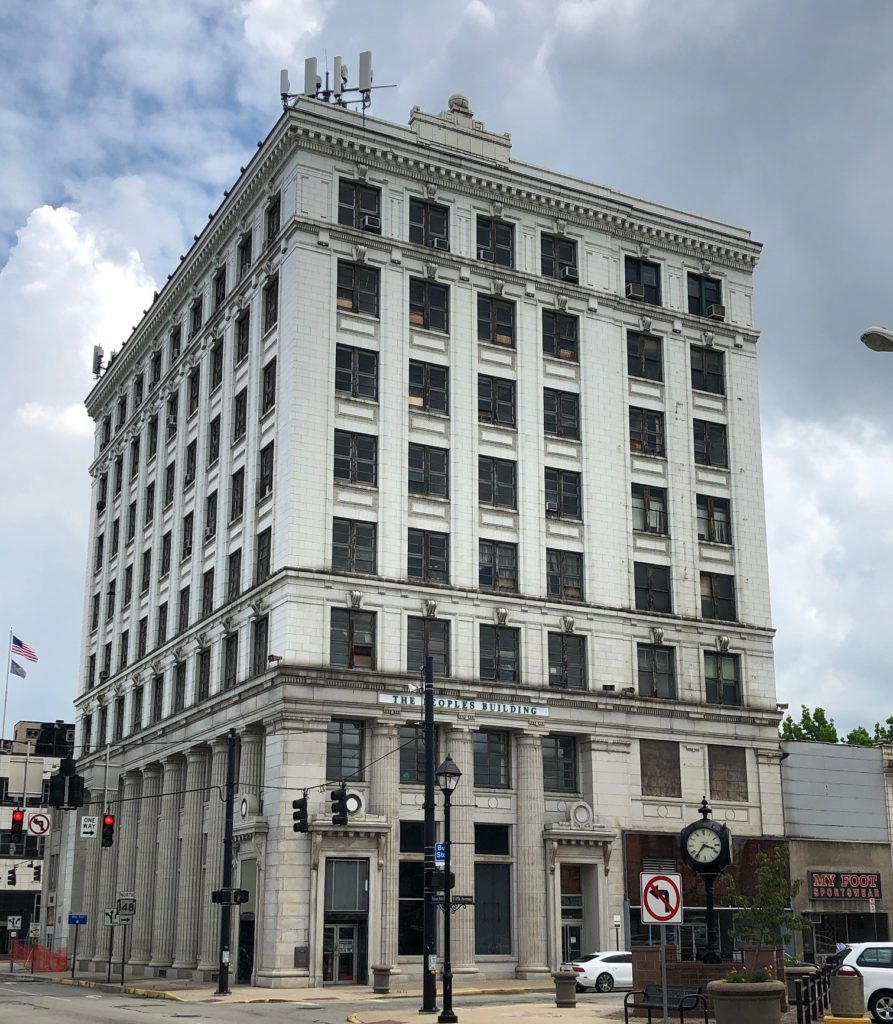
Under Criterion C, The Peoples Bank Building is a locally significant example of early-twentieth century, Beaux Arts, commercial/professional architecture. Its monumental scale; steel-framed, fireproof construction; Classically-derived, tripartite vertical organization; bipartite form (primary bank tower with subsidiary retail function) and sculptural granite and terra cotta ornamentation are distinctive in the context of McKeesport’s commercial architecture.
It is also significant for its mixed-use design, expressed in its primary façade, in which the bank was supported by a retail tenant on its east and by professional tenants on its west above the main banking room.
Germantown Fireproof Storage Warehouse
231-253 Church Ln., Philadelphia
LISTED, 7/5/2022
PA-SHARE Resource # 1983RE01502
The Germantown Fireproof Storage Warehouse, which was constructed in 1927, is located in the Germantown neighborhood of Philadelphia. Its overall aesthetic was designed to resemble a fortified structure, an appropriate stronghold reference for a storage warehouse.
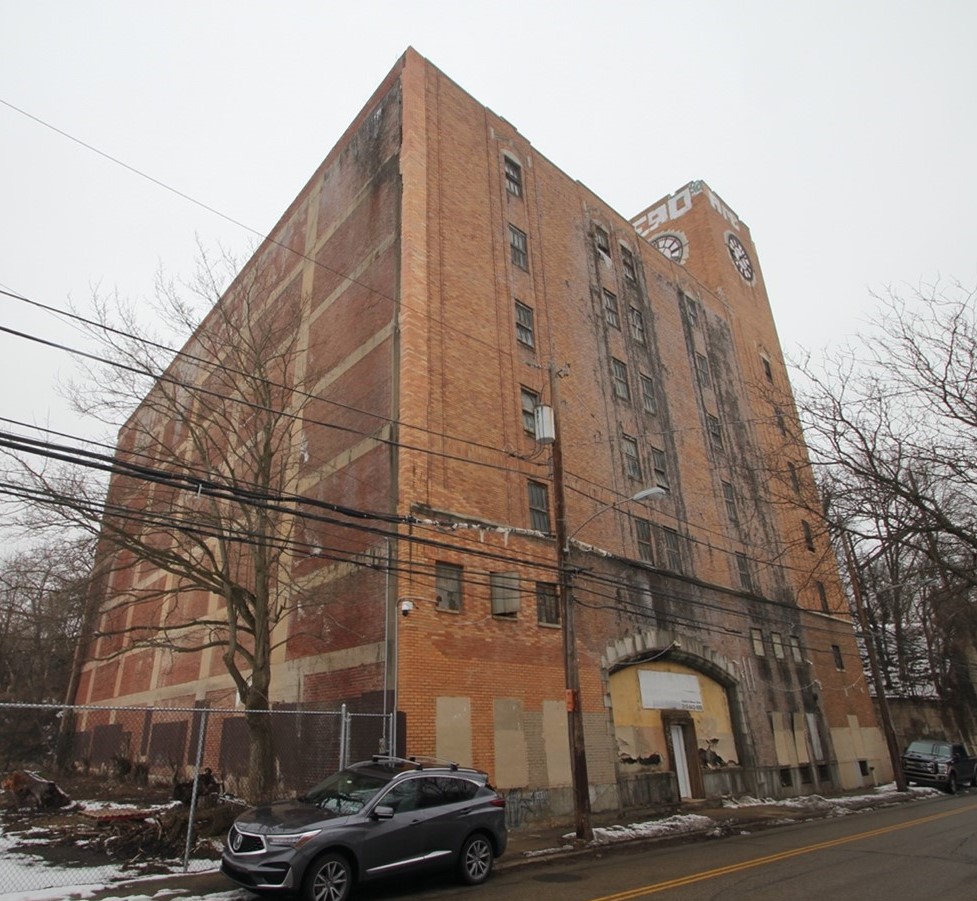
The Germantown Fireproof Storage Warehouse, has local significance under Criterion C for Architecture, as an archetypal example of an early 20th-century, multi-story, fireproof warehouse, specifically used for the storage of household goods.
The building is a good example of the work of prolific warehouse architect George S. Kingsley, who designed the subject property using reinforced concrete to serve the programmatic needs of a storage warehouse while the architectural style served as advertising for the business within.
New Castle Hospital
1000 South Mercer Street, New Castle City, Lawrence County
LISTED, 9/16/2022
PA-SHARE Resource # 2001RE00771
New Castle Hospital, also known as St. Francis Hospital, includes four contributing resources: the main hospital building; the associated New Castle Hospital School of Nursing; the New Castle Hospital Boiler House; and, the New Castle Hospital Helipad. The hospital building was constructed in phases between 1919 and 2001.
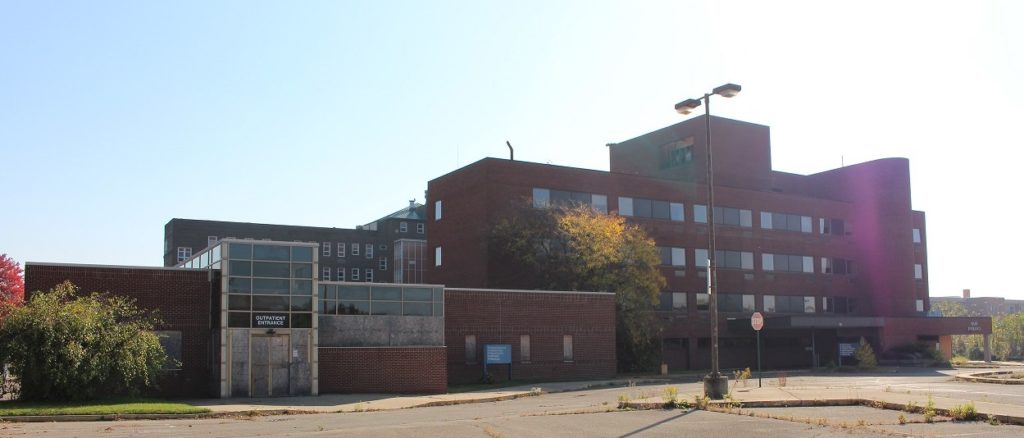
New Castle Hospital was constructed by the Sisters of the Order of St. Francis as a Roman Catholic hospital and is locally significant under Criterion A in the category of health/medicine as an example of an evolving 20th century Catholic hospital that played an integral role in the growth and administration of health care services to the City of New Castle and greater Lawrence County. The hospital stands as the second rendition of the New Castle Hospital and the first purpose built religious affiliated hospital building in the city.
Frantz School
485 Church Rd., Ross Township, Monroe County
LISTED, 9/16/2022 (Educational Resources of Pennsylvania MPS)
PA-SHARE Resource # 1995RE22575
The Frantz School, located at the intersection of Church Road and Keystone Lane (formerly Frantz Lane), in Eldred Township, Monroe County, is a one and a half-story, one-room schoolhouse that served as a public school for 90 years from its construction c. 1855 until 1945. Built during a period of extensive public school building following the passage of the Free Public School Act of 1834, the one-room Frantz School was constructed in the common one- room school form prevalent throughout rural Pennsylvania.
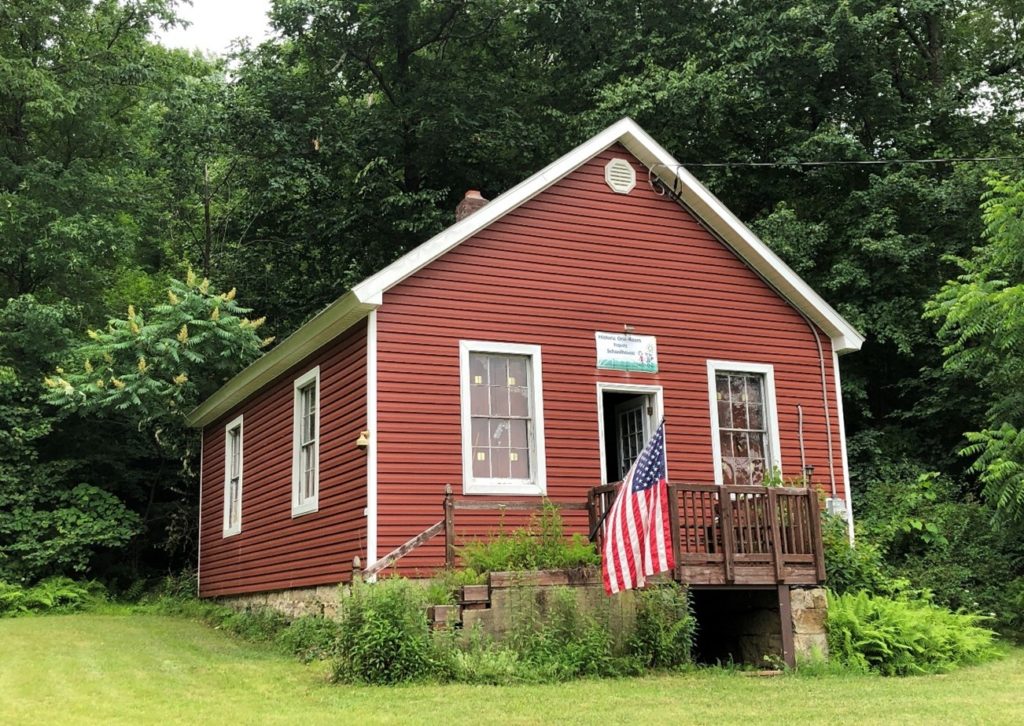
The Frantz School is eligible for the National Register of Historic Places under Criterion A for Public Education, under the Historic Educational Resources of Pennsylvania Multiple Property Documentation Form (MPDF). It is an example of a mid-19th century, rural one-room school. The property has a period of significance of ca. 1855 to 1945, from its construction until it ceased to function as a public school.
The Frantz School is the best surviving one-room school in Eldred Township, Monroe County. While one- room schools are often of simple vernacular form and were built throughout the state, they served a vital role in public education and are a diminishing historic resource type.
Hokendauqua Thomas Iron Company Town Historic District
Roughly bounded by Front, Center, Carbon, Vine, and South Sts., Whitehall Township, Lehigh County
LISTED, 9/19/2022
PA-SHARE Resource # 2021RE00197
The Hokendauqua Thomas Iron Company Town Historic District is located in Whitehall Township, Lehigh County. The districtlies directly west of the Lehigh River and former Ironton railroad track. The eligible historic district comprises the boundary of the original Thomas Iron Co. company town grid. The Thomas Iron Co. iron plant is no longer extant but was located directly east of the company town along the western banks of the Lehigh River.
The district contains 135 contributing buildings, which date from the Thomas Iron Co. company’s ownership of their company town (c.1868-1924), and there are 23 non-contributing buildings. The district continues to convey its significance as a highly intact regional example of a planned mid-19th-century company town.
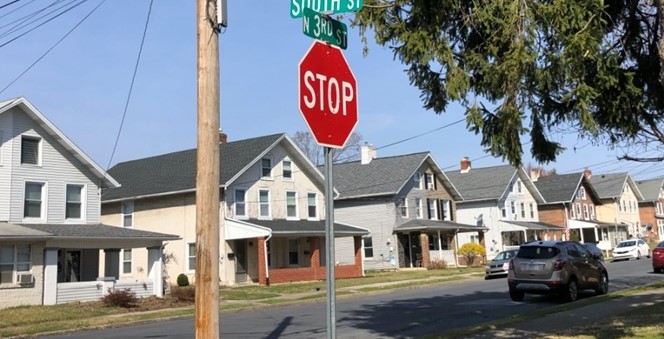
The Hokendauqua Thomas Iron Company Town is significant under Criterion A and C for its association with the Thomas Iron Company – one of the earliest companies to successfully manufacture and mass-distribute anthracite iron – and as an example of a c.1867-1924 company town, comprised of a dense cluster of vernacular worker housing, supervisor residences, and some remaining company-associated and donated buildings. The worker housing is immediately identifiable by the buildings’ appearance, and by the densely planned, narrow lot sizes.
The district’s period of significance begins c.1867, at which time the company founder, David Thomas, commissioned residences for the plant’s managers and worker housing. The period ends in 1924, when the company stock was sold off, the worker housing sold to private owners, and the Thomas Iron Company ceased to control their “company town.” The period is tightly tied to the Thomas Iron Company’s plant operation near the distinctive worker housing and associated civic and administrative buildings.
Williamson Free School of Mechanical Trades
106 South New Middletown Rd., Middletown Township, Delaware County
LISTED, 10/6/2022
PA-SHARE Resource # 2011RE00403
The Williamson Free School of Mechanical Trades is a campus with 56 resources, mostly located near the center of an approximately 221 acre site on the west side of South New Middletown Road (SR 0352), almost mid-way between central Philadelphia and Wilmington, Delaware. Initial campus development occurred between 1890 and 1893. Campus buildings are primarily red brick and stone construction, and are loosely Romanesque, Queen Anne, and Colonial Revival in style.
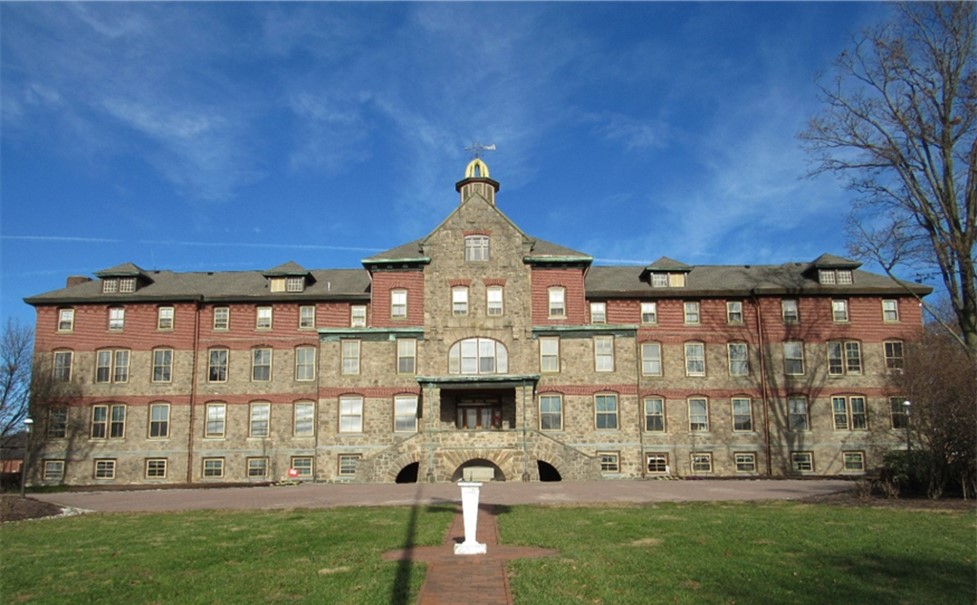
The Main Administration Building (now Rowan Hall), the President’s and Vice President’s houses, student residential cottages, a power plant, and shops for instruction, were designed by Furness, Evans & Co. architects of Philadelphia, and attributed specifically to Frank Furness. Several buildings were constructed with student labor as hands-on experience opportunities. Of the counted resources, 41 are contributing, and 15 are non-contributing.
The Williamson Free School of Mechanical Trades was established and endowed by Philadelphia merchant and philanthropist Isaiah Vansant Williamson. He founded the school so poor or orphaned boys could learn a trade to support themselves financially. Williamson lived to see the property identified that the future school would occupy but died before the campus took physical form.
The first school buildings were designed by the noted Philadelphia architectural firm, Furness, Evans & Company, and Furness scholars have attributed the Williamson campus buildings directly to architect Frank Furness, making the Williamson campus the site of the largest assemblage of Frank Furness/Furness, Evans & Co. buildings in the United States. Furness, Evans was not only responsible for the buildings, but for the early campus plan, making the school an important, possibly unique, example of a planned campus by the firm.
Cameron County Courthouse
20 East 5th St., Emporium Borough, Cameron County
LISTED, 10/20/2022
PA-SHARE Resource # 1996RE01055
Constructed in 1890, the Cameron County Courthouse is a three-story Romanesque Revival style county courthouse with a five-story clock tower. Romanesque Revival details such as round arches and a turret clearly distinguish the building as a good example of the style. The building retains a good degree of architectural integrity as a late nineteenth-century county courthouse, with much of the original interior plan, materials, form, and massing intact to convey a historic understanding of its function.
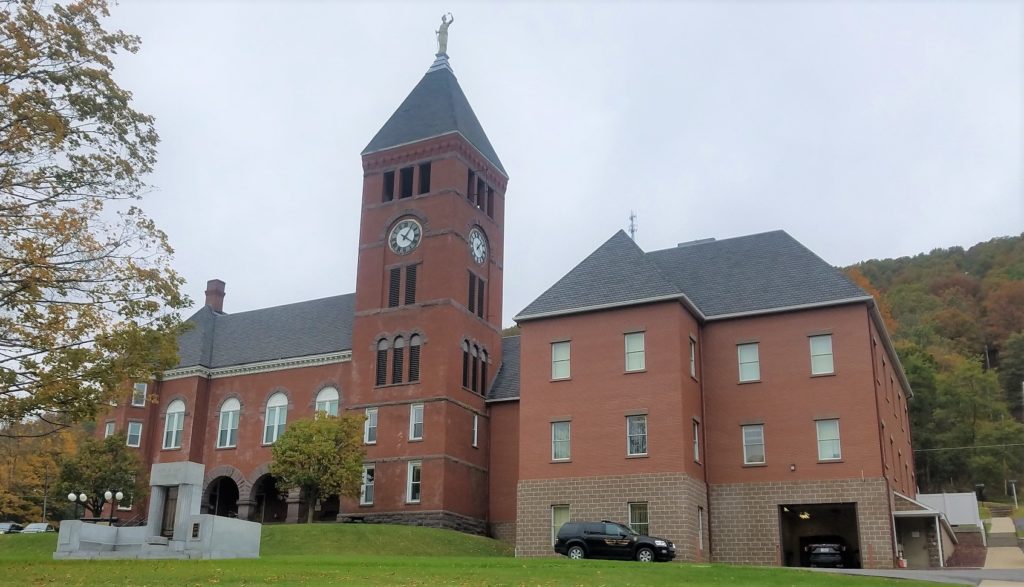
The Cameron County Courthouse represents a significant contribution to the history of civic architecture in the borough of Emporium, PA. Situated on a large rectangular site at the topographical peak of downtown, the building is significant under Criterion C as a Romanesque Revival-style brick building designed to function as the governmental seat of justice in Cameron County.
Designed by Amos S. Wagner and built by John W. Kriner, the building still features character-defining elements such as a main courtroom, clocktower, original Judge’s bench, and rare blindfold-less Lady Justice sculpture. Many original wood and plaster ornamental elements are intact. The period of significance for the building is its construction date of 1890.
Marsh Creek Advent Church
1303 Moose Run Rd., Boggs Township, Centre County
LISTED, 11/21/2022
PA-SHARE Resource # 1987RE00006
The Marsh Creek Advent Church is a one-story log structure with stone foundation sheathed with lapped siding. Built in 1849 by followers of William Miller, on land donated by iron masters Andrew Gregg and James Irvin, it represents a plain meeting house in the Greek Revival style of the mid-19th century that was widely adopted by Methodists, the Plain sects, and other denominations in Pennsylvania and elsewhere.
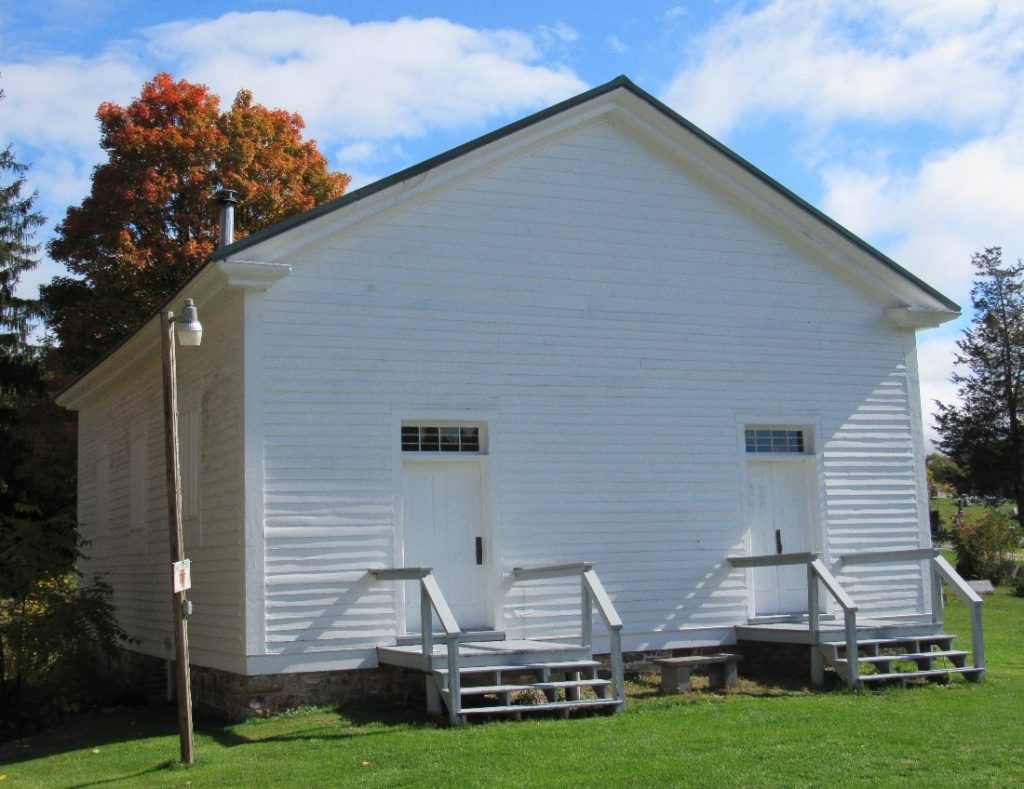
Pew configurations, dual entrances, and overall simplicity further reflect the Adventists’ explicit rejection of religious trappings and ornament. The adjacent Advent Cemetery, a contributing site, with burials dating from 1849, was part of the church property until ownership was transferred to the Advent Cemetery Association in 1948.
The Marsh Creek Advent Church is an important regional example of a meetinghouse plan church with Greek Revival style elements retaining a high level of integrity. The meetinghouse plan was domestically inspired and was based on the one- or one-and-a half story dwelling house typically found in late 18th-and early 19th-century rural Pennsylvania.
The Marsh Creek Church features many of the characteristics common to this scale and type of Greek Revival rural church constructed in the mid-19th-century with dual gable-end entries, symmetrical fenestration, molded cornice returns and corner pilasters. Many of these characteristics emerged in the early decades of the 19th-century. By the 1830’s, many meetinghouses adopted a floorplan with two aisles and a central bank of pews that faced a lowered pulpit. These architectural features supported changes in religious preferences and practices as new evangelical denominations adopted more personal and flamboyant preaching styles during the revivalism of the Second Great Awakening. During this period, Methodists and Baptists grew in numbers, and new evangelical groups, like the Adventists emerged.
Fort Pittston School
255 North Main St., Pittston City, Luzerne County
LISTED, 11/21/2022 (Educational Resources of Pennsylvania MPS)
PA-SHARE Resource # 2021RE00409
The Fort Pittston School is a two-story, red brick building constructed in 1909 in the Renaissance Revival style. The building sits on a steep grade that was once a portion of the original Fort Pittston located there in the 1770s through 1780s. There is a prominent concrete retaining wall with stairs leading to the building’s front entrance from the sidewalk that wraps around the main (west) and south facades. The Fort Pittston School has been closed since 1963.
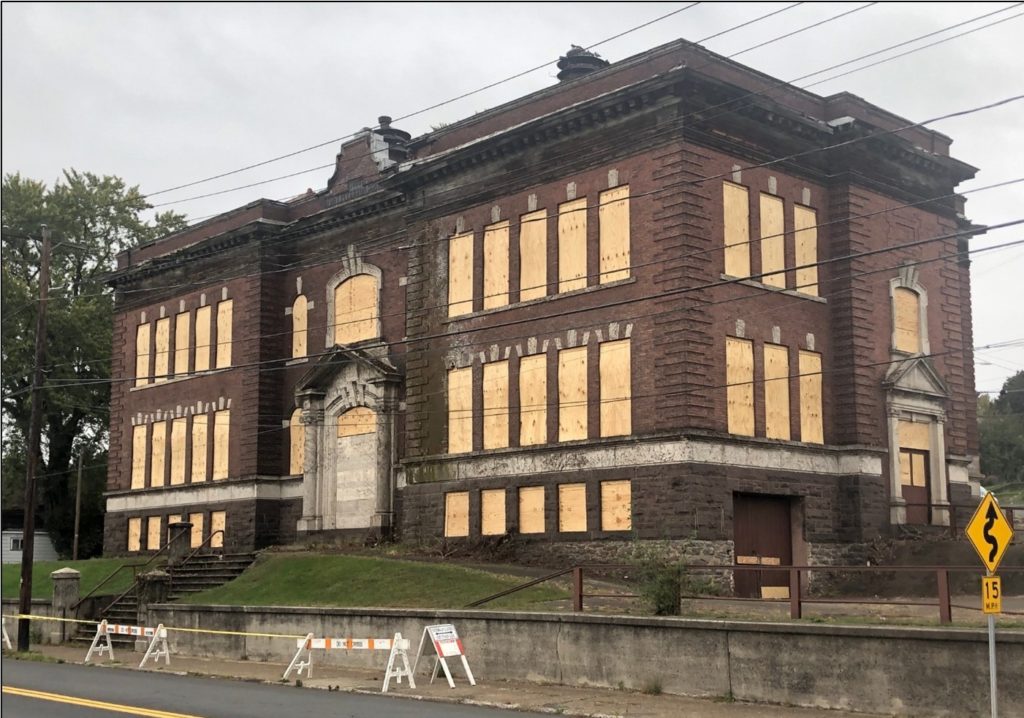
The Fort Pittston School meets the requirements for the property type public elementary and secondary schools as defined in the MPDF Historic Educational Resources of Pennsylvania: Public Elementary and Secondary Schools in Pennsylvania, 1682 – 1969, under Criterion A – Education and Criterion C – Architecture. The school illustrates the major trends in educational theory and practice during “The Long Progressive Era, 1867-1930,” including the emphasis on multi-room classrooms for separate grade levels and the desire to “Americanize” immigrant populations.
The school also embodies the design tenets of “The Long Progressive Era, 1867-1930,” including the emphasis on natural light, air circulation, and use of the revival style popular for progressive schools at that time. The period of significance begins in 1909-1910 with the construction of the school and ends in 1963 with the school’s closure.

Leave a Reply